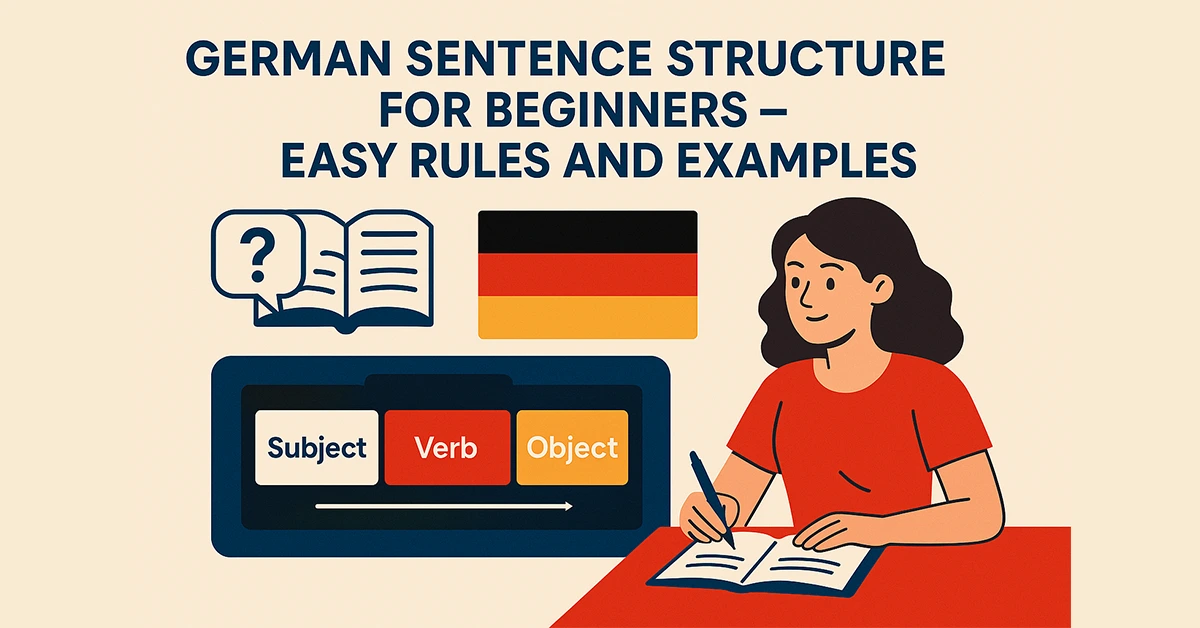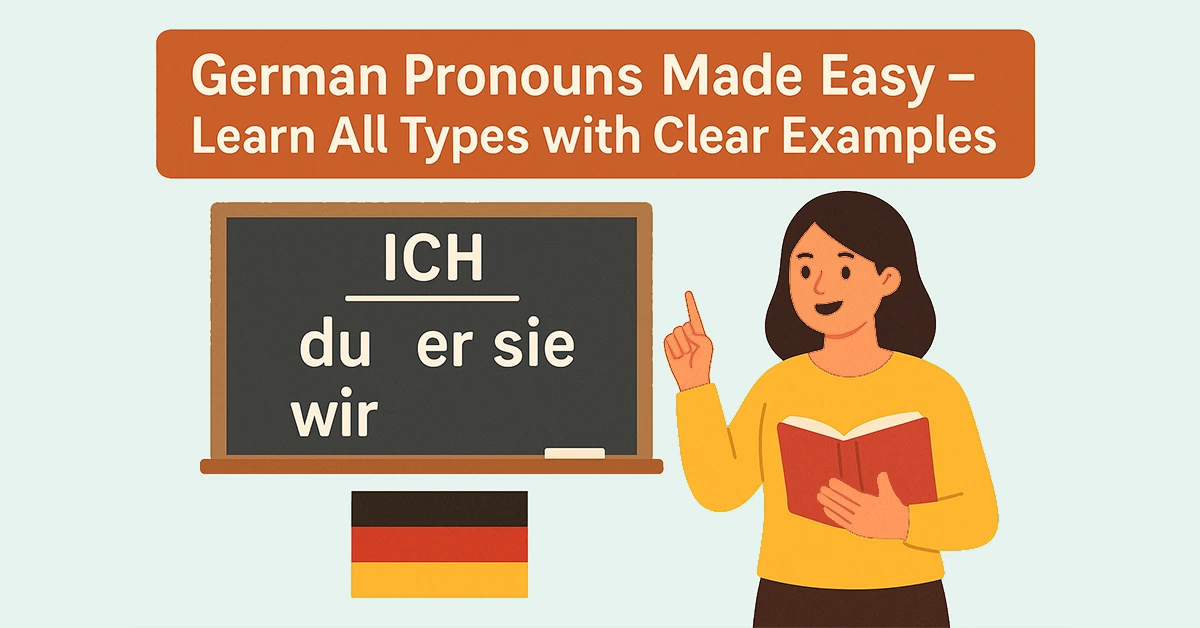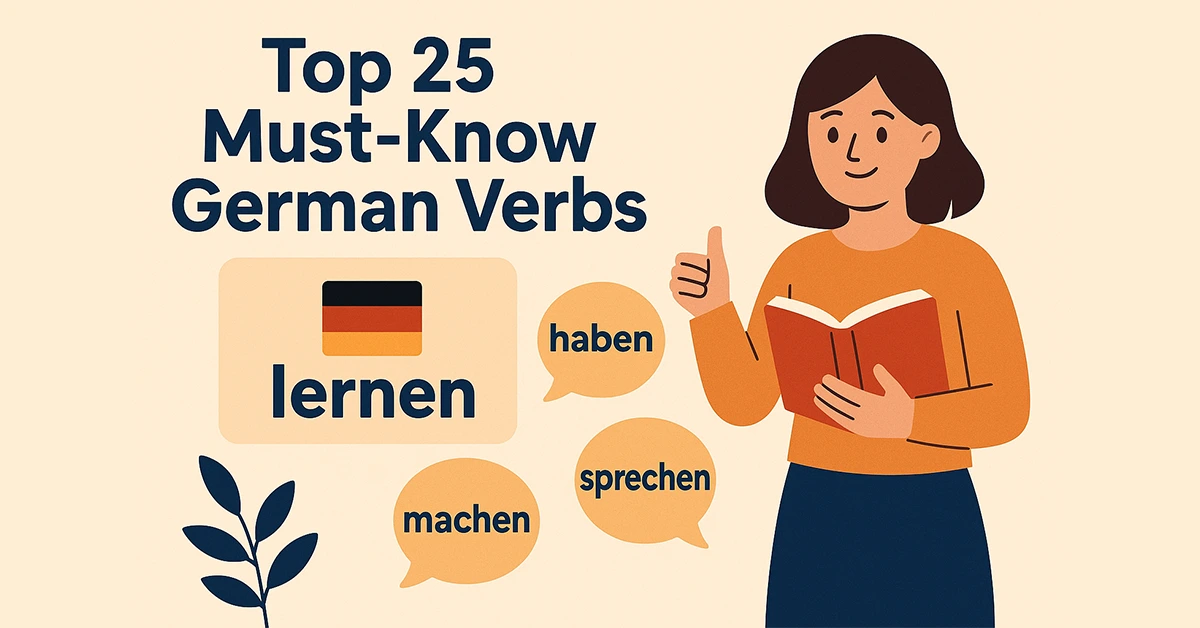German grammar for beginners
-

German Sentence Structure for Beginners – Easy Rules & Examples
Learn German sentence structure step by step with clear examples and grammar rules. Master word order, verb placement, and build accurate sentences easily.
-

The Present Tense in German – A Beginner’s Guide
Learn how to use the German present tense (Präsens) with clear rules, examples, and conjugation tables. Perfect for beginners to start speaking German today!
-

German Pronouns Made Easy – Learn All Types with Clear Examples
Learn all types of German pronouns with simple explanations and examples. This complete guide covers personal, reflexive, possessive, and more – perfect for beginners!
-

Top 25 Must-Know German Verbs – Easy Conjugation Guide
Master the top 25 most useful German verbs with easy conjugation tips, pronunciation, and real-life examples. Perfect for beginners learning German verbs!